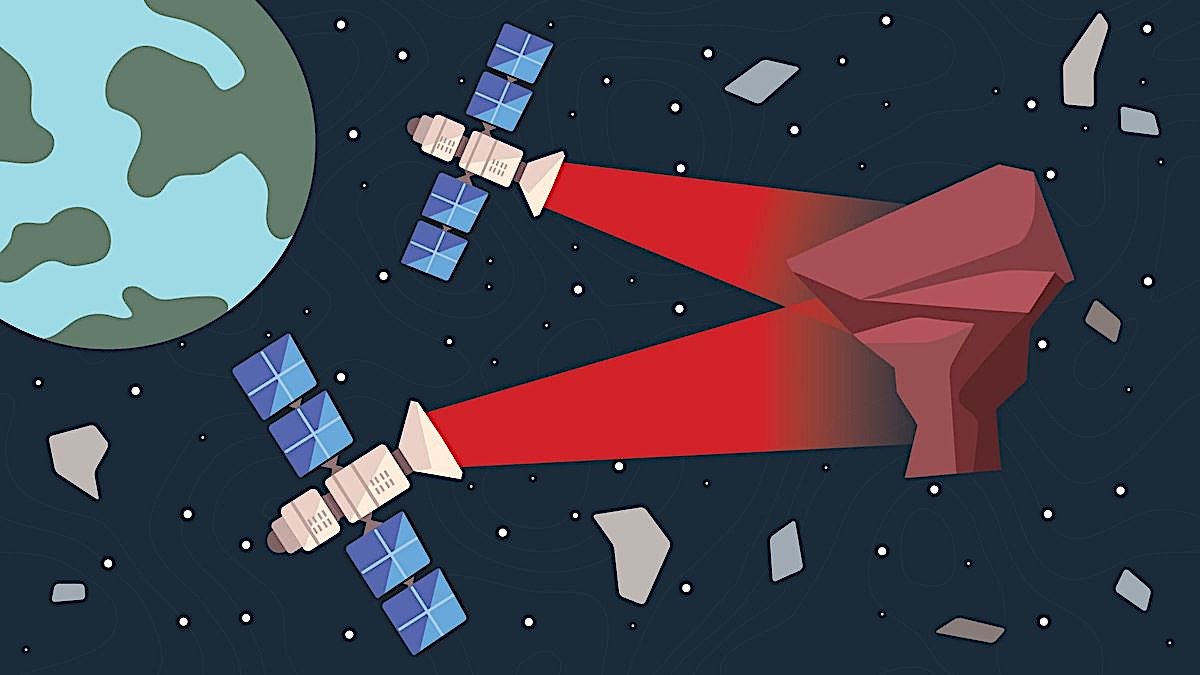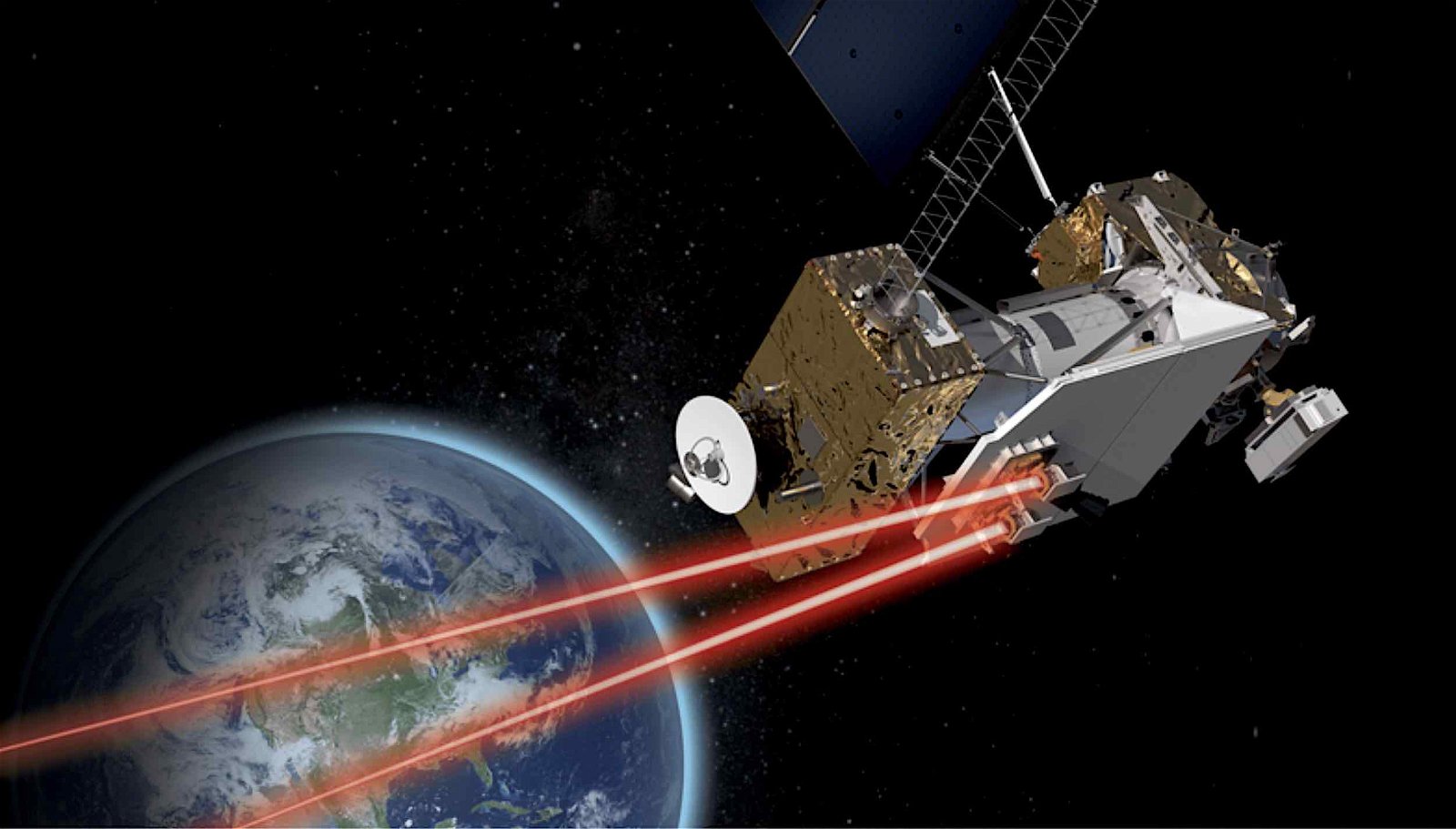NASA has partnered with West Virginia University to develop a multi-platform system of space lasers, which the space agency says will be capable of defending the country’s space assets from catastrophic collisions and other potential spaceborne threats.
By using advanced AI algorithms, these space lasers will work together to deflect or even de-orbit objects that might threaten our existing satellites operating in Low Earth Orbit (LEO), or even kill people on the ground. If successful, the same system could also be tasked to deflect an incoming meteor or even repel attacks from adversarial spacecraft.
Low Earth Orbit Becoming Increasingly Perilous
The world’s space programs have vehicles operating as far out as the edge of the solar system, but the vast majority of human-made hardware in space lies in LEO. As a result, this region has become increasingly populated with damaged or defunct satellites, which make up only a small fraction of the over 25,000 pieces of orbital spacecraft debris circling the planet.
Because they are traveling at over 17,000 mph, even the tiniest of these pieces of junk can cause catastrophic failures to satellites, other spacecraft, or even humans operating the International Space Station (ISS). In fact, the ISS has had to repeatedly change its orbit to avoid potential space junk collisions. The situation has gotten so bad that many of the world’s scientists have even called for a treaty to mitigate the space junk threat.
Many innovative solutions to the growing LEO space junkyard have been proposed or are in development. Now, a brand new entry from NASA and West Virginia University is underway. Based on the initial specifications, it sounds like something straight out of a science fiction movie.
Craft Armed With Space Lasers Will Use Laser Ablation to Defeat Threats
Over the last few decades, the science and engineering behind using lasers to repel threats and neutralize targets has become well-developed. Sophisticated combat laser systems are already being tested by the U.S. Navy, the Air Force, and the Army. And the Israeli Ministry of Defence has already deployed lasers to protect their borders against aerial threats.
Now, Hang Woon Lee, the director of the Space Systems Operations Research Laboratory at WVU, says he is using funding from NASA to develop the brains of a system that can use already developed laser technologies to counter space-borne threats.


“Our goal is to develop a network of reconfigurable space-based lasers, along with a suite of algorithms,” Lee explained in a press release announcing the new project. “Those algorithms will be the enabling technology that makes such a network possible and (to) maximize its benefits.”
Notably, the system Lee is developing isn’t designed to blast the debris like a combat laser downing a missile or a drone. Instead, his space laser is designed to push on the debris using a process called laser ablation, as well as the pressure from the laser light itself.
Laser ablation works by vaporizing a small piece of the target with the laser, which creates a plasma plume on its surface. That plume, along with the photonic pressure from the laser itself, pushes the debris out of its orbit, altering its overall trajectory enough to keep it from slamming into something important.
“The (combined) process of laser ablation and photon pressure induces a change in velocity in the target debris, which ultimately alters the size and shape of its orbit,” Lee explained.
Another advantage of this space laser system is its versatility. Many of the proposed solutions to space junk have targeted the largest pieces of debris. Lee’s system can target minuscule flakes of paint or tiny pieces of debris that are extremely difficult to target but can cause significant damage if they collide with operational space platforms.
Autonomous AI Algorithms Will Coordinate Multiple Space Lasers Against Debris, Meteors, or Attacks
As noted, the long-term goal of Lee and NASA is to create and deploy a network of space lasers around the globe that are “actively performing orbital maneuvers and collaboratively addressing orbital debris.” The benefits of multiple space lasers deployed on existing satellites or dedicated maneuverable platforms include wider coverage of the LEO environment, as well as the ability to use multiple lasers to defeat a single target.
“Using a system of multiple lasers can create multiple engagement opportunities with debris and lead to more efficient control of the trajectories,” said Lee. Also, several lasers can combine their power to push a single target even harder, thus “altering its trajectory in a way that would be impossible with a single laser.”
Although not expressly discussed in this instance, similar systems in the future might theoretically be capable of aiding in defense efforts against other threats, which may include meteors or even adversarial attacks. The recently minted Space Force is already researching using autonomous space vehicles for defense, so the idea of arming these craft with lasers and AI systems to help aid in the mitigation of threats could be feasible.
The next step of the program involves writing the complex algorithms that will help the lasers work autonomously and with coordination to detect and repel threats, an effort funded by NASA for the next three years. If successful, this space laser system could soon be patrolling the heavens protecting us from a whole range of threats.
Christopher Plain is a Science Fiction and Fantasy novelist and Head Science Writer at The Debrief. Follow and connect with him on X, learn about his books at plainfiction.com, or email him directly at christopher@thedebrief.org.
This article has been updated to clarify the uses of the laser systems it discusses, as well as potential uses for similar space-based laser systems in the future.

